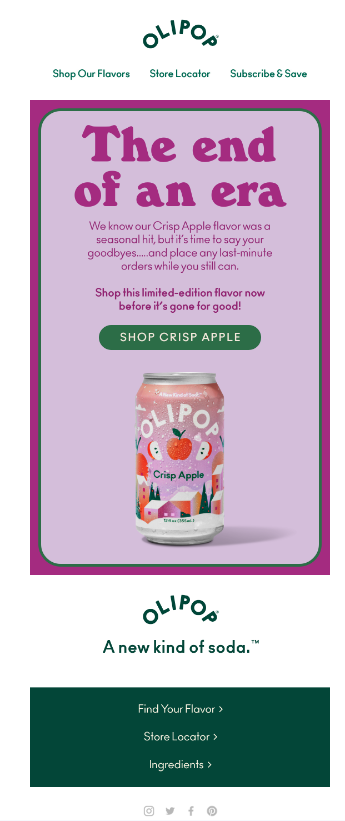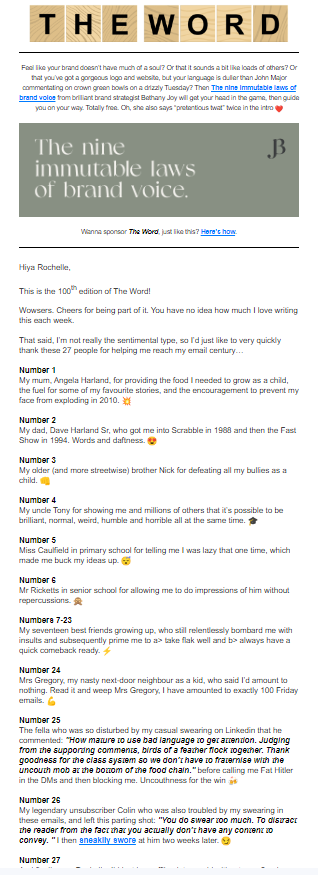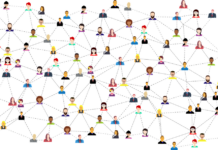
As most readers are subjected to several emails a day, there is a significant possibility that your newsletter is not getting seen. Even if customers have opted in, they might not read your newsletter for various reasons. Read on to discover how you can diminish these reasons using our four ways to create more helpful newsletter content, whether you are beginning or looking to improve your email marketing campaign. This guide also includes email newsletter examples from brands who know how to create engaging content.
What Is An Email Newsletter?
With its primary objective of continuously engaging a target audience, an email newsletter is one of the main tools for nurturing leads. This is because it gives readers news about products, services, and events, leading them to an eventual purchase. In addition, newsletters work well with a daily, weekly, or monthly frequency, so subscribers can regularly expect email content that addresses their needs. You also need to monitor the effectiveness of an email newsletter using metrics so you can continually reinvent the experience of receiving emails.
What Are The Benefits Of Email Newsletters For Your Email Marketing Campaign?
You cannot ignore developing a solid email newsletter strategy with email marketing set to cross the $10 billion mark in 2023. Here are some benefits of using newsletters as part of your email marketing campaign.
Allows You To Source Feedback
To continue interacting and engaging with your customers, you need to know what they think about your brand. Improve your customer experience and retain your existing readers by using your newsletter to send surveys which can be used to source metrics like your Net Promoter Score (NPS).
Accelerates Your Overall Return-On-Investment (ROI)
Your newsletter subscribers are likelier to improve your sales as they have invested in your brand by opting into your updates and message. This is why it will be easier to use your email newsletter to encourage these readers to purchase your products or services eventually.
Helps To Create Customized Content Based On A Specific Type of Customer
When readers first sign up for your newsletter, you should provide them with a way to tell you what type of email content they want. This way, you can create unique content based on segmenting your target audience, allowing you to send the right email newsletter to the right customer.
Depending on the type of customer, personalization may involve using different images, subject lines, or promotions to improve engagement with diverse groups of individuals. For instance, you can use a personalized email newsletter with promotional offers to re-engage a lost subscriber.
Showcase Your View On Current Trends
When your target audience feels they can talk to you, it will improve brand loyalty and trust. One way of conversing with your subscribers more appropriately is to give your view on the latest popular culture trend. As a result, you can showcase your brand’s personable side and improve the user’s experience.
How Can You Create The Perfect Email Newsletter To Entice Readers?
While you are now aware of how a newsletter can improve the effectiveness of your email campaign, you need to know the specific actions you can take to make this reality. In the next part of this article, you will find email newsletter examples demonstrating the steps you need to take to keep your readers engaged.
Avoid Sending Too Many Emails On The Same Topic
If you bombard your readers with too many newsletters on the same topic within a shorter time, like a week, they will ignore you. Even worse, your newsletter could become an email that does not interest individuals, which could cause them to unsubscribe eventually. So, when it is a special occasion like Valentine’s Day, make sure you make your main newsletter on this topic count like Thortful.
Rather than sending countless emails reminding its readers to purchase Valentine’s day cards for their loved ones, Thortful sends a newsletter reminder a week before the primary day. This is because they know this will give subscribers enough time to pick a card and ensure it is delivered by the day.
It also uses several calls to action (CTA’s) throughout the newsletter to motivate customers to choose a card for him or her. Lastly, it allows its readers to provide feedback on this newsletter with its clickable emojis at the bottom of it.
Stop Using False Urgency For Promotional Offers
If your newsletter continually promotes offers for every time of purchase, there will be no sense or scarcity created. Readers will not be encouraged to make as many purchases as discounts are always available. Instead, take inspiration from this email newsletter from Olipop.
This newsletter encourages customers to buy its limited edition Crisp Apple flavor soda. While no discount is provided, Olipop does not need it as they are promoting a product with minimal stock. This soda was created for autumn and winter, which is not always available.
Create Curiosity With Your Subject Line
While a newsletter’s subject line should engage your subscribers to open it, it should not give everything away. Conversions only take place when a customer can click into the email and scroll through the newsletter. The Untethered Mind newsletter creates this curiosity with its subject line, ‘10 things that are easy to set up that make life 10X better’.
This subject line will appeal to most readers as everyone wants to improve their life using more manageable steps. At the same time, it does not tell you these ten things, meaning you are encouraged to open and read through the newsletter. It is also essential to notice that while it uses longer paragraphs, it is broken up with many white space and sub-headings.
Lastly, while this newsletter aims to sell this author’s course and program, this is at the end. This way, readers get the opportunity to get free advice that could eventually convince them to buy the paid service and product.
Talk To Your Reader Like You Would Speak To A Friend
Most subscribers will sign up for your email newsletter as they have a pain point that needs resolving. So, you need to speak to them in a friendly, relatable way that will provide them with solutions but also indicates that you have faced similar issues in the past.
When Dave Harland creates the weekly newsletter, the Word, he portrays precisely this. He does not aim to create just another writing advice newsletter; instead, he tries to show individuals the methods he uses to improve his writing style with a humorous slant. While he aims to educate with what he calls a ‘learny bit,’ it is mixed in with a touch of fun so that whatever is written sticks in your head.
Creating newsletters as part of your email marketing campaign is a cost-effective way to engage with your readers regularly. If you follow the dos and don’ts and consider the email newsletter examples in this guide, you will grow a better brand newsletter and constantly keep your readers enthralled.














